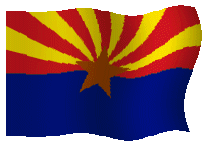
This weekend, celebrate Arizona by visiting a state park (before they’re forced to close due to lack of adequate funding) or other place of interest. For ideas, visit Arizona Passages or Arizona Heritage Traveler.

This weekend, celebrate Arizona by visiting a state park (before they’re forced to close due to lack of adequate funding) or other place of interest. For ideas, visit Arizona Passages or Arizona Heritage Traveler.
[Source: Mike Sunnucks, The Phoenix Business Journal] — As Congress moves on President Barack Obama’s economic stimulus plan, critics are voicing concerns about where the money is being spent and whether it will have a quick payoff. The $825 billion package could swell to $1 trillion and looks to pump up the economy via federal spending on public works construction, energy research, aid to state governments with budget deficits, expanded welfare and safety net programs.
One estimate by the Congressional Budget Office said only $26 billion would be allocated this year on infrastructure and public works spending as states and cities, including Scottsdale, Goodyear, Tucson, Phoenix and Mesa, line up projects for possible funding. Meanwhile, local officials say federal requirements to have construction and infrastructure projects “shovel-ready” is limiting such requests. Gay Garesche, an economics professor at Glendale Community College, said the U.S. economy may be rebounding by the time the federal stimulus money gets to construction projects and starts to work its way into economic benefits. “That stimulus isn’t going to hit until the economy has almost recovered,” said Garesche. Instead, she suggests continued help for banks to free up credit and loans and avoiding any actions that hurt the U.S. auto market. [Note: to read the full article, click here.]
[Commentary by Rich Glinski, Park Supervisor, Desert Outdoor Center at Lake Pleasant, Maricopa County Parks and Recreation Department] — While working in the Nongame and Habitat programs at Arizona Game and Fish Department, I had a first-hand opportunity to witness the benefits of Heritage dollars working for wildlife. From gathering data on little known species, to implementing needed wildlife management actions and acquiring important habitat, the Heritage Fund to me represented a means of doing great things for wildlife resources.
After retiring from the AGFD I began managing an educational facility for Maricopa County Parks and Recreation Department. The Desert Outdoor Center at Lake Pleasant has given me an opportunity to work with a great variety of interpreters and teachers, many of whom have reaped benefits for kids by involving them with Heritage projects. I have become keenly aware of the wonderful educational opportunities afforded by Heritage dollars.
And as the new and exciting world of parks and recreation has unfolded before me, my formal involvement with the professionals in Arizona Parks and Recreation Association has enhanced further my notion of the broad-reaching influence of Heritage Fund money. From acquiring park lands to providing interpretive signage, Heritage dollars seemingly are always at it, making Arizona a better place to live.
As with my work on wildlife issues, my new connections with education, parks and recreation have made me aware of the diverse array of challenges our great state faces, and how much the Heritage Fund is critical to providing opportunities to meet these challenges. This is especially true with the new economic gloom, which threatens to un-do much of the wonderful production gained by Heritage dollars thus far.
The diversity of impacts that the Heritage Program has spread across Arizona’s landscape is truly impressive. If your life meanderings have not given you the opportunity to assess this first-hand, I hope you will visit the websites of the Heritage Alliance, the Arizona Game and Fish Department, or the Arizona State Parks. Look over the accomplishments, savor them, and then please work hard to protect this opportunity.
[Source: Nogales International, Kathleen Vandervoet] – – Santa Cruz County was recently awarded $85,503 for the Robert Damon Recreational Complex Soccer Field. The Arizona State Parks Board on Sept. 19 announced awards of more than $41 million in grants from the Arizona Heritage Fund, the Land and Water Conservation Fund (LWCF), the Recreational Trails Grant Fund Program, and the Land Conservation Fund.
The Heritage Fund, created in November 1990, provides up to $10 million annually from Arizona Lottery proceeds. A press release said there are three competitive grant programs offered annually from the Heritage Fund to provide opportunities for the public to enjoy parks and outdoor recreation, and to help preserve natural and cultural resources: Local, Regional and State Parks (LRSP), Historic Preservation, and Trails. The State Parks Board approved a total of $542,293 to six Historic Preservation Heritage Fund grant applicants. [Note: to read the full article click here.]